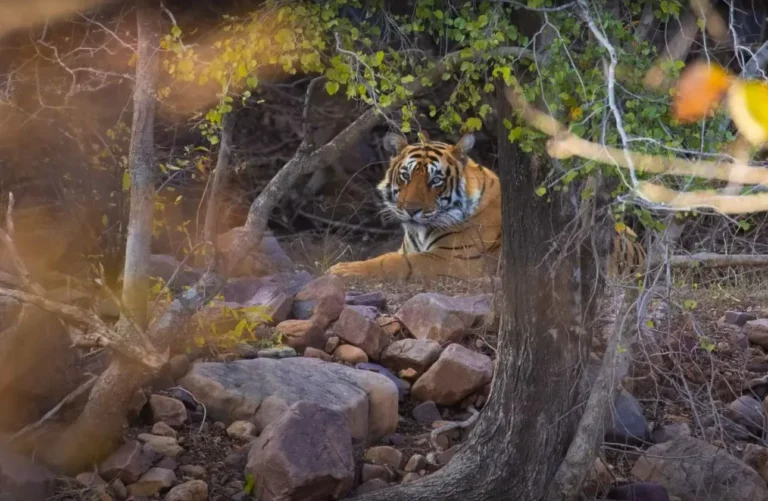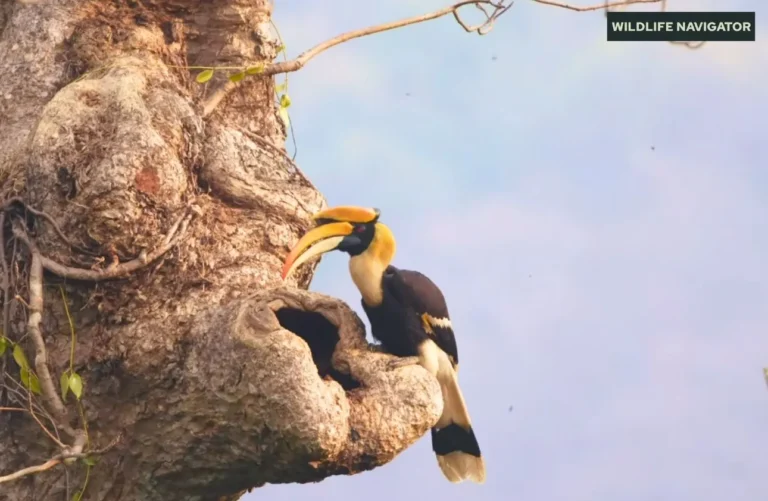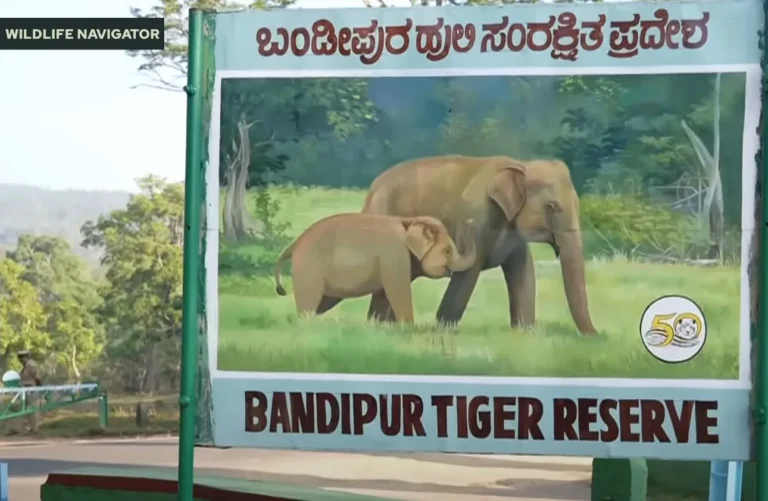Pakke Tiger Reserve: Wildlife, Safaris & Eco-Tourism

Pakke Tiger Reserve (also known as Pakhui Tiger Reserve) is one of Arunachal Pradesh’s most treasured wilderness areas. Established as part of Project Tiger, this reserve plays a crucial role in safeguarding India’s most iconic big cat, along with countless other rare species. While the tiger remains the flagship, the reserve is also home to leopards, clouded leopards, and wild dogs (dholes), making it a hotspot for carnivore diversity.
Spanning across 862 sq. km, Pakke is famous not only for its elusive tigers but also for its unique ecological identity. The dense evergreen forests echo with the calls of hornbills, which have earned the park the nickname “Hornbill Haven.” In fact, the community-driven Hornbill Nest Adoption Program has become a global model for conservation success.
For wildlife enthusiasts and photographers, Pakke offers an exciting mix of challenges and rewards. Tiger sightings are rare and require patience, but the lush habitats, pristine rivers, and vibrant birdlife make every safari memorable. Popular zones like the Seijosa Range and riverine belts near the Pakke River are often highlighted for sightings and birdwatching opportunities.
Whether you’re a conservationist, a traveller seeking offbeat destinations, or a photographer chasing the wild’s untamed beauty, Pakke Tiger Reserve promises an unforgettable immersion in one of India’s last great biodiversity frontiers.
History, Geography & Landscape
The Pakke Tiger Reserve, originally notified as a wildlife sanctuary in 1977 and later declared a tiger reserve in 2002 under Project Tiger, carries both ecological and cultural significance. Nestled in the East Kameng district of Arunachal Pradesh, the reserve is bordered by Assam’s Nameri National Park to the south and Eaglenest Wildlife Sanctuary to the west, making it part of a larger connected wilderness corridor in the Eastern Himalayas.
Geographically, Pakke lies in the foothills of the Himalayas, covering 862 sq. km of dense forests, rolling hills, and river valleys. Three major rivers—the Pakke, Bhareli, and Kameng—flow through and around the reserve, nourishing its ecosystems and creating spectacular riverine habitats. These waterways also serve as lifelines for the animals and the indigenous Nyishi community living nearby.
The terrain is a mosaic of evergreen forests, semi-evergreen patches, bamboo groves, and rippling grasslands. The park’s climate is tropical and humid, with heavy monsoon rains from May to September. Winters are cool and dry, while summers remain warm but comfortable, allowing year-round exploration.
This rich landscape not only shelters charismatic megafauna like tigers and elephants but also supports an extraordinary diversity of birds, reptiles, and amphibians. Together, Pakke’s history and geography highlight its role as a crucial stronghold for conservation and a serene escape for travellers who want to experience wilderness in its most pristine form.
Flora and Fauna of Pakke Tiger Reserve
One of the most striking features of Pakke Tiger Reserve is its lush and diverse vegetation, which forms the foundation of its thriving wildlife. The reserve is cloaked in tropical semi-evergreen and evergreen forests, with dense canopies of tall trees like hollong, nahor, and canes. Bamboo thickets and scattered grasslands add variety to the terrain, offering ideal habitats for both herbivores and predators.
Pakke is a true biodiversity hotspot. The tiger stands as the flagship species, but the forest also harbours other charismatic mammals such as the Asian elephant, clouded leopard, leopard, gaur, barking deer, and wild dogs (dholes). Smaller mammals like the capped langur, Malayan giant squirrel, and flying squirrels add to the charm of wildlife sightings.
For bird lovers, Pakke is nothing short of paradise, with over 300 species of birds recorded. It is particularly renowned as a stronghold for hornbills—Great Hornbill, Wreathed Hornbill, and Oriental Pied Hornbill are regularly sighted, and community-based conservation has turned the reserve into a global example of hornbill protection. Other avian highlights include the Great Barbet, White-winged Duck, and various rare babblers.
Reptiles and amphibians also thrive here, with king cobras, pit vipers, and an impressive variety of frogs inhabiting the forest floor. Together, this incredible richness of flora and fauna makes Pakke a sanctuary where nature unfolds in vibrant, untamed layers—perfect for explorers, birdwatchers, and conservationists alike.
Safari Experience, Entry Fees & Park Zones
A visit to Pakke Tiger Reserve is incomplete without experiencing its safaris, which allow visitors to step into the heart of its wild landscapes. Unlike more commercialized reserves, Pakke offers a relatively offbeat and tranquil safari experience, making it perfect for travelers who seek close encounters with untouched wilderness.
The most common way to explore the reserve is through jeep safaris, which are organized in specific ranges like Seijosa, the most popular entry point. Some eco-tour operators also arrange trekking and guided walks, offering unique opportunities to explore the forest floor, observe hornbill nests, and track signs of wildlife. While elephants are present, elephant rides are not promoted here, in line with ethical tourism practices. In some riverine areas, boat rides may be arranged, particularly around the Pakke and Kameng rivers, which enhance the experience with breathtaking scenery and birdwatching.
Safari timings usually follow early morning and late afternoon slots, when animal activity is highest. Entry fees vary for Indian and foreign tourists, with additional charges for vehicles, guides, and cameras. Booking can be done through the forest office in Seijosa or with the help of community-run eco-camps, which also provide trained naturalists.
Though tiger sightings are rare compared to central Indian reserves, Pakke’s safaris reward visitors with elephant herds, colourful hornbills, playful primates, and the soothing rhythm of forests untouched by mass tourism.
Best Time to Visit Pakke Tiger Reserve
The beauty of Pakke Tiger Reserve shifts dramatically with the seasons, offering unique experiences for travellers throughout the year. However, the ideal time to visit largely depends on what you wish to see and experience.
Winter (November to March) is widely regarded as the best season. The weather is cool and pleasant, with clear skies perfect for safaris, birdwatching, and photography. This is also when hornbills are most active, especially during their nesting season, making it a rewarding time for bird enthusiasts. Wildlife sightings are frequent as animals move closer to open areas and riverbanks.
Summer (April to early June) brings warmer temperatures but still remains comfortable due to the forest’s lush canopy. It’s a good time to spot elephants, deer, and predators like leopards, as water sources shrink and wildlife activity increases around rivers and streams.
Monsoon (late June to September), though spectacular in terms of greenery and river flows, is the least recommended for tourism. Heavy rainfall can make trails slippery, rivers swell dangerously, and safaris are often restricted. However, for hardcore nature lovers and researchers, the monsoon reveals a different side of Pakke—teeming with amphibians, reptiles, and fresh foliage.
For the best balance of comfort and wildlife sightings, November to March remains the top choice, but adventurous travellers may find summer equally enchanting.
How to Reach & Getting Around
Reaching Pakke Tiger Reserve requires a bit of planning, but the journey is part of the adventure. The reserve is located in the East Kameng district of Arunachal Pradesh, with Seijosa being the main entry point for visitors.
The nearest airport is Tezpur in Assam (around 50 km away), which connects to Guwahati by regular flights. For broader connectivity, Lokpriya Gopinath Bordoloi International Airport, Guwahati, is the best option, located about 200 km from Pakke. From either Tezpur or Guwahati, taxis and shared jeeps are available to reach Seijosa.
For train travellers, the nearest railway stations are Bhalukpong and Tezpur, both offering decent connections from Assam’s major hubs. From there, road transport is the only way forward. The reserve is accessible via highways that pass through scenic stretches of Assam, with NH-15 being a common route.
Within the park, private vehicles are not permitted beyond entry gates. Instead, safaris are conducted in forest department jeeps or vehicles arranged by eco-camps. Hiring local guides or naturalists is highly recommended—not only for spotting wildlife but also to understand the cultural and ecological significance of the reserve.
While Pakke is not as easily accessible as more famous parks, its remoteness ensures fewer crowds and a truly wild experience. Travellers are rewarded with serenity and untouched natural beauty once they arrive.
Accommodation, Dining & Stay Options
Staying near Pakke Tiger Reserve is an experience in itself, as most options are simple, eco-friendly, and closely connected to the local community. Unlike more commercialised parks, Pakke’s charm lies in its rustic yet sustainable lodging choices that immerse visitors in the natural environment.
The most notable stay option is the Hornbill Nest Eco-Camp, located near Seijosa and jointly run by the forest department and the local Nyishi community. This eco-camp is famous for promoting conservation and offers basic cottages or tents with clean facilities, warm hospitality, and guided nature walks. Staying here directly supports community-based initiatives like the Hornbill Nest Adoption Program.
For those looking for budget options, government forest rest houses in Seijosa provide simple accommodations with essential amenities. Advance booking is advisable through the forest office. A few small guesthouses and homestays in nearby towns cater to backpackers and budget travellers.
Luxury resorts are limited in the immediate area, but travellers can find more comfortable stays in Assam, particularly around Tezpur, and make day trips to Pakke.
Dining options are modest but satisfying, with most eco-camps and lodges serving local tribal cuisine and Assamese dishes, often prepared with organic ingredients. Expect wholesome meals featuring rice, dal, vegetables, meat curries, and for the adventurous, local delicacies. Eating here not only nourishes the traveller but also connects them to the region’s culinary traditions.
Travel Tips, Facilities & Visitor Guidelines
Visiting Pakke Tiger Reserve is a rewarding experience, but it requires preparation, as the park is remote and facilities are more basic compared to popular reserves. Packing the right essentials can make your trip smooth and enjoyable.
Wear light, breathable clothes in summer, warm layers in winter, and always carry a raincoat or poncho during the monsoon. Neutral-colored clothing is ideal for safaris and treks, helping you blend into the forest environment. Don’t forget binoculars, a good camera with zoom lens, insect repellent, sunscreen, and a sturdy pair of walking shoes. A small medical kit with personal medicines is strongly advised, given the limited medical facilities nearby.
Inside the park, facilities are minimal but sufficient. Restrooms and basic shelters are available at some entry points, while eco-camps often provide packed meals and drinking water during safaris. Visitors should always carry some snacks and water of their own, especially on longer excursions.
Safety is a priority. Maintain silence during safaris, avoid sudden movements, and keep a respectful distance from animals. Do not litter, pluck plants, or feed wildlife. Flash photography should be avoided, especially around birds and nocturnal species. Always follow the instructions of forest guides and naturalists.
Nearby Attractions, Culture & Suggested Itineraries
A trip to Pakke Tiger Reserve can be enriched by exploring its surrounding natural and cultural treasures. The reserve is part of a larger network of protected areas in the Eastern Himalayas, offering travellers many opportunities for extended adventures.
Just across the border in Assam lies Nameri National Park, known for river rafting on the Jia-Bhoreli River and birdwatching. To the west, the Eaglenest Wildlife Sanctuary is world-famous among birders, with rare species like the Bugun Liocichla. For those willing to travel further, the legendary Kaziranga National Park, home to the one-horned rhinoceros, can be included in a longer itinerary.
Beyond wildlife, the region’s tribal culture is equally fascinating. The local Nyishi community plays a key role in Pakke’s conservation success. Visitors can interact with villagers, learn about traditional lifestyles, and even participate in eco-tourism initiatives like the Hornbill Nest Adoption Program, where community members protect hornbill nests for conservation.
For itineraries, a 2-day trip can focus on Pakke itself—jeep safaris, birdwatching, and a cultural village visit. A 3-day trip could include a day of rafting or birding in Nameri, followed by exploration of Pakke’s core forest zones. Adventurers can extend to a 5–7 day circuit, combining Pakke, Nameri, and Eaglenest for a diverse Eastern Himalayan wildlife experience.
With its mix of wilderness and culture, Pakke offers more than just a safari—it provides a glimpse into a living landscape where people and nature coexist.
Conservation & Importance of Pakke Tiger Reserve
Pakke Tiger Reserve is not just a haven for wildlife but also a symbol of successful grassroots conservation. Declared a tiger reserve in 2002 under Project Tiger, it plays a critical role in preserving the biodiversity of the Eastern Himalayas, one of the world’s richest eco-regions.
Pakke is globally renowned for its Hornbill Nest Adoption Program, where local Nyishi communities protect hornbill nesting trees in exchange for conservation incentives. This unique collaboration has transformed former hunters into guardians of the forest, turning Pakke into a model for community-driven conservation. The presence of four hornbill species—the Great, Wreathed, Oriental Pied, and Rufous-necked hornbills—underscores the reserve’s ecological importance.
Beyond hornbills, Pakke provides critical habitat for endangered species like tigers, elephants, clouded leopards, and rare reptiles. It acts as a vital corridor for wildlife movement across Arunachal Pradesh and Assam, ensuring genetic diversity and ecological stability.
However, conservation here faces challenges: deforestation, illegal hunting, and human-wildlife conflict remain ongoing threats. The forest department, NGOs, and local communities work tirelessly through patrols, awareness campaigns, and eco-tourism to mitigate these issues.
For visitors, supporting conservation is simple—stay in eco-camps, hire local guides, and follow responsible travel practices. By choosing Pakke, travellers contribute directly to a remarkable story of how people and wildlife can coexist, making this reserve one of India’s shining examples of conservation success.
FAQs About Pakke Tiger Reserve
1. When is the best time to visit Pakke Tiger Reserve?
The ideal period is November to March, during winter, when the weather is pleasant, and wildlife sightings, especially hornbills and elephants, are more frequent. Summer (April–June) is also suitable, while the monsoon (July–September) brings heavy rains, limiting accessibility.
2. How can I book safari tickets?
Safari bookings are handled by the forest department at Seijosa or through eco-camps and local tour operators. Booking in advance is recommended, especially during peak season. Online booking options may be limited, so contacting the forest office directly ensures confirmed entry.
3. Which animals are commonly seen?
Apart from elusive tigers, visitors often spot Asian elephants, leopards, dholes (wild dogs), gaur, barking deer, and a rich array of birds, including hornbills, barbets, and babblers. River areas attract sightings of otters and freshwater turtles.
4. Is Pakke safe for families with kids?
Yes, it is generally safe. Families are advised to follow park rules, stay with guides during safaris, and maintain safe distances from wildlife. Basic facilities and eco-camps provide a comfortable experience for children.
5. What are the nearest transport hubs?
The closest airport is Tezpur (Assam), about 50 km away. For rail travellers, Bhalukpong or Tezpur stations are the nearest. From these points, shared jeeps or taxis take visitors to Seijosa, the main entry point.
6. How can visitors support conservation?
Stay in community-run eco-camps, hire local guides, and practice responsible tourism—avoiding littering, respecting wildlife, and following park rules. Your visit directly contributes to local and ecological conservation efforts.




